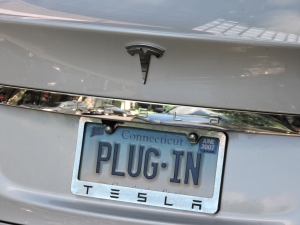The Governor’s Council on Climate Change (GC3), which was formed in April 2015, has released its first report.
The GC3 Exploratory Report explains what the Council has been working on over the past year, lays out the Council’s guiding principles, process, and working groups, and includes recommendations from the Leadership, Accountability, and Engagement working group. It also includes information about the Analysis, Data, and Metrics working group, whose work is still ongoing, and lays out next steps for that working group in 2016.
 CFE President Don Strait serves on the GC3 alongside state agency heads, business representatives, and other nonprofit representatives. Collectively, the GC3 members reflect a wide range of experiences, perspectives, and backgrounds. However, they also rely on public input from groups and individuals from around the state whose viewpoints and priorities may not be reflected on the Council.
CFE President Don Strait serves on the GC3 alongside state agency heads, business representatives, and other nonprofit representatives. Collectively, the GC3 members reflect a wide range of experiences, perspectives, and backgrounds. However, they also rely on public input from groups and individuals from around the state whose viewpoints and priorities may not be reflected on the Council.
The exploratory report makes it clear that Connecticut faces great challenges, but also opportunities, as we work to ensure that the state meets the greenhouse gas (GHG) emissions reduction goals required under the Global Warming Solutions Act. Under that law, the state must reduce emissions at least 80 percent from 2001 levels by 2050.
The exploratory report is a good first step towards reaching that goal, but the real work still lies ahead.
 Under Executive Order 46, the GC3 is charged with recommending policies, regulations, or legislative actions that will help the state achieve the 2050 emissions reduction target. In addition, the GC3 must establish interim goals that, if met, will ensure that the state meets the 2050 target. Finally, the GC3 must monitor emissions annually to determine whether the state is on track to meet the targets and must regularly report on its findings and recommendations.
Under Executive Order 46, the GC3 is charged with recommending policies, regulations, or legislative actions that will help the state achieve the 2050 emissions reduction target. In addition, the GC3 must establish interim goals that, if met, will ensure that the state meets the 2050 target. Finally, the GC3 must monitor emissions annually to determine whether the state is on track to meet the targets and must regularly report on its findings and recommendations.
In 2016, CFE looks forward to working with the GC3 to fulfill these responsibilities. Specifically, we would like to see the GC3 take the following actions:
- At a minimum, establish interim targets for 2030 and 2040, with regular check-ins every five years. Having multiple interim targets is critical to ensure (1) that the state is on track to meet the 2050 target, and (2) that the targets remain politically relevant.
- Establish a robust stakeholder process that engages a diverse range of groups and individuals from around the state, with a specific focus on engaging underrepresented minority and low-income communities whose voices may otherwise go unheard.
- Develop specific recommendations and strategies to reduce emissions and start implementing those strategies immediately.
- Require the state to lead by example in tracking and reducing GHG emissions. For instance, state agencies should be required to report their GHG emissions annually and explain why the emissions have increased or decreased since the previous report. State agencies should also be required to consider the climate impacts of their planning and decisions and select options that minimize the production of GHG emissions.
The first round of GC3 stakeholder engagement events will begin in May. Public engagement and support will be critical to ensure that the state follows through on its climate goals. The state’s climate planning process will be much stronger if it reflects input from a diverse array of citizens and groups. CFE encourages everyone to participate in these events and spread the word to your networks.
The GC3 is planning to develop its specific recommendations and strategies during the summer and fall, and will release a report with those recommendations by the end of the year.
Posted by Shannon Laun, energy attorney at CFE/Save the Sound.
